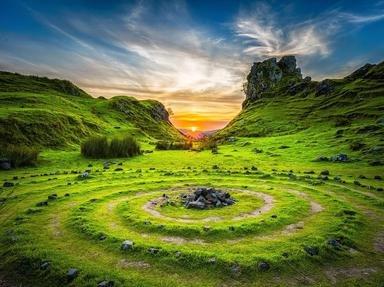Quiz Answer Key and Fun Facts
1. "In 1814, we took a little trip, along with Colonel Jackson down the Mighty Mississip". Johnny Horton won the 1960 Grammy for Best Country & Western Recording with this rendition of which American battle?
2. "That famous day in history the men of the 7th Cavalry went riding on.
And from the rear a voice was heard, a brave young man with a trembling word
Rang loud and clear, WHAT AM I DOING HERE?
Please, Mr. Custer, I don't wanna go."
What was the name of the battle where George Armstrong Custer and his men were slaughtered by the Indians?
3. "He was born in November, 1963, the day Aldous Huxley died", Sheryl Crow sings in her single "Run Baby Run". Which of the following two lines could be substituted without changing the date in question?
4. "Well I came upon a child of God, He was walking along the road
And I asked him tell where are you going. This he told me,
Well I am going down to Yasgur's farm, Going to join in a rock and roll band
Goin' to get back to the land to set my soul free"
In which New York town was the Woodstock festival held on August 15-18, 1969?
5. The national anthem of the United States is, of course, "The Star Spangled Banner". It is actually the story of a specific battle in American war history. Which battle was writer Francis Scott Key referring to when he was penning the lyrics?
6. Crosby, Stills, Nash, and Young sang a great historical song with their protest anthem "Ohio", singing:
"Tin soldiers and Nixon coming,
We're finally on our own.
This summer I hear the drumming,
Four dead in Ohio."
Where did the four dead in Ohio get killed?
7. Peter Gabriel paid homage to a great South African anti-apartheid leader who was introduced to the rest of the world by white reporter Donald Woods and was killed by South African police. Who was this anti-apartheid activist?
8. In 1968, Dion sang "Abraham, Martin, & John", about the assassinations of Abraham Lincoln, Martin Luther King, and John F. Kennedy. "He freed a lot of people but it seems the good, they die young. I just looked around and he was gone." A fourth person who was assassinated, a brother of one of the above, is also mentioned in the song. Who was this person?
9. ABBA won the 1974 Eurovision Song Contest singing about Napoleon's loss in 1815.
"My my, at Waterloo, Napoleon did surrender.
Oh yeah, and I have met my destiny in quite a similar way."
Which Napoleon actually surrendered to the Duke of Wellington at Waterloo on June 18, 1815?
10. In 1990, the Scorpions sang "Wind of Change", commemorating the tearing down of the Berlin Wall and the fall of Communism. One of the key moments leading up to the event was U.S. President Ronald Reagan's famous "Tear Down that Wall" speech at the Brandenburg Gate, separating East and West Berlin. Who did he demand tear down the wall?
Source: Author
eauhomme
This quiz was reviewed by FunTrivia editor
bloomsby before going online.
Any errors found in FunTrivia content are routinely corrected through our feedback system.

